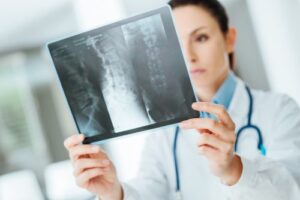Medical Freedom for Victims: Your Right to Choose Your Doctor
To be clear, no-fault insurance, or med-pay coverage, does not require you to go a specific doctor or get pre-authorization. Rather, the Kentucky Motor Vehicle Reparations Act says that if the treatment is reasonable and related to the injuries sustained in the car wreck, the PIP carrier, a.k.a. the no-fault insurance company, owes coverage for that medical bill. You can treat with whichever doctor you want.

Don’t Let People Play Games with You
When it comes to personal injury protection coverage (“PIP), there are not any pre-authorizations or medical providers in or out of a network. Rather, a no-fault carrier has you sign a PIP application which is essentially, a fancy medical authorization. This authorization allows them to obtain your medical records and bills, to review them and to determine if they are related to the injuries sustained in the car wreck. Why is this important? Because you can go wherever you want, to whichever doctor or chiropractor you choose, to treat for your injuries.
I just spoke to a new client. In short, one of the big firms told him that he was going to be referred to a chiropractor, even after he said he was not comfortable with a chiropractor. Look, I have nothing against chiropractors but who he decides to obtain medical treatment from is the client’s choice, not the choice of any personal injury lawyer.
It’s All About You
My job as a personal injury lawyer is to advise my client of what I believe the best decision would be. It’s not to make that decision for him/her. I give out the name of chiropractors and/or medical doctors during the course of handling the client’s injury claim. However, I do so because either those doctors are easy to work or because they will work with me on reducing their charges, if necessary, to maximize a client’s recovery. Nevertheless, I make it clear to all my clients, and I have said this in front of doctors:
“You are my client, not this medical provider! While I appreciate that this medical provider may have given you my name, my legal duties run to you. If you are not happy with their facility or if the treatment is not helping you, let me know. We will find you another doctor, or chiropractor, and I will still be your lawyer.”
I consider some of the doctors or chiropractors that I have worked with to be good friends and I have even traveled with them. Nevertheless, my client has the absolute right to choose where he or she wants to receive medical treatment. My job, as a good personal injury lawyer, is to make sure those charges will be paid and/or reduced out of any personal injury settlement that might be reached.
Click here to listed to my podcast episode about PIP (“no-fault”) insurance coverage.

Need More Information?
If you have questions about your automobile accident, call my cell at (502) 609-7657. As an attorney, I handle motor vehicle accident claims in Kentucky and Indiana. You deserve to speak directly with an attorney; not a paralegal or case manager. My principal office is located in Louisville, Kentucky.
This is an adverstisement.


 Reflex Sympathetic Dystrophy (RSD), also referred to as Complex Regional Pain Syndrome (CRPS), is a condition that can be characterized by a variety of symptoms including pain, frequently a burning type of pain, tenderness, swelling of the area or extremity, sweating, flushing, warmth and/or coolness of the area, discoloration, and in some cases shiny skin.
Reflex Sympathetic Dystrophy (RSD), also referred to as Complex Regional Pain Syndrome (CRPS), is a condition that can be characterized by a variety of symptoms including pain, frequently a burning type of pain, tenderness, swelling of the area or extremity, sweating, flushing, warmth and/or coolness of the area, discoloration, and in some cases shiny skin.